#garden pests
Text
Assorted blurry but cute bug faces :3

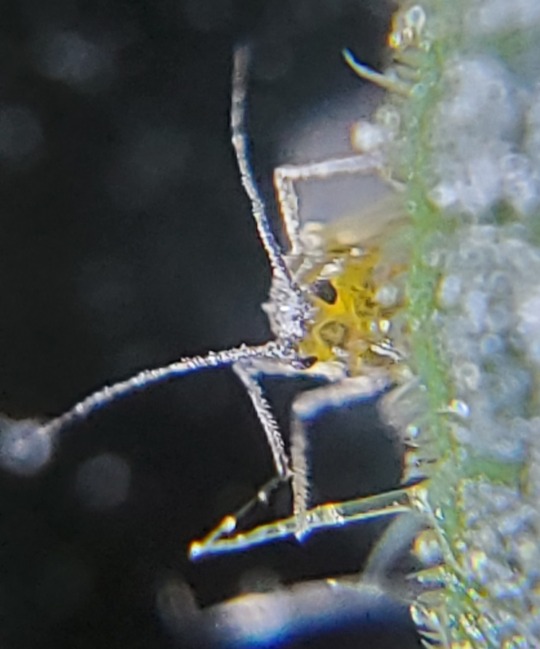


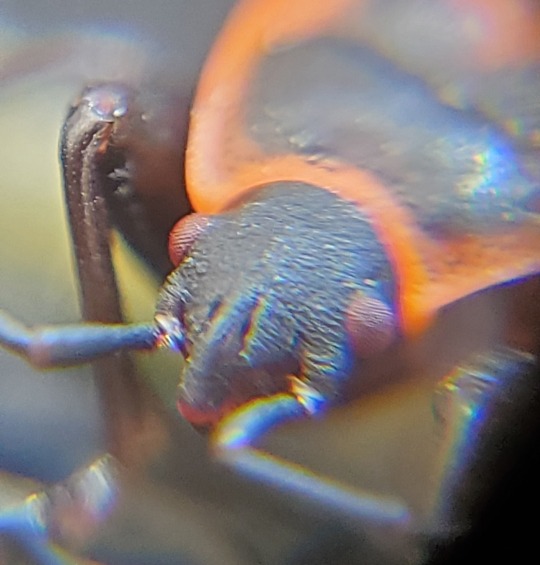


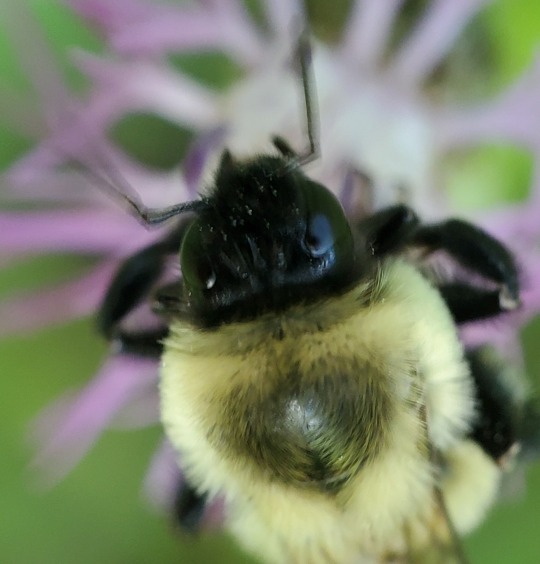
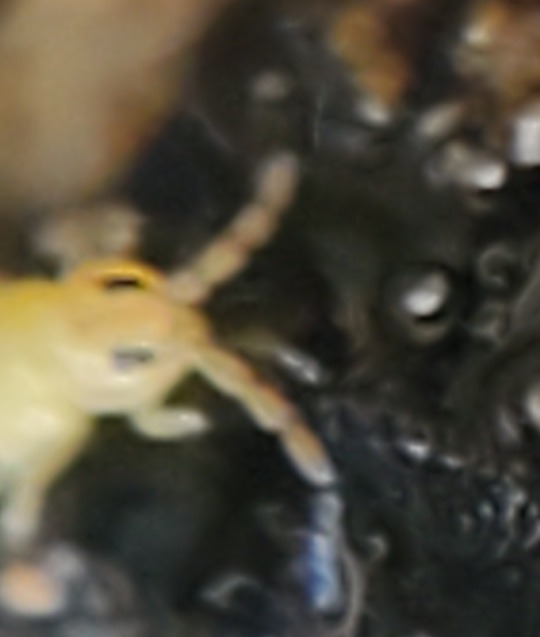
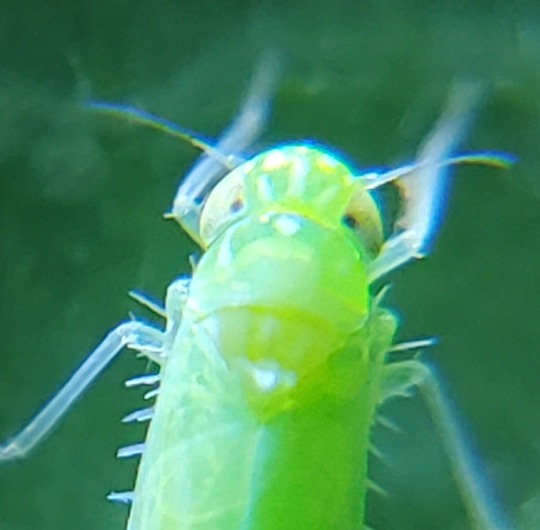
Whitefly (Trialeurodes vaporariorum)
Aphid (species unknown)
Eggplant leafroller moth (Lineodes integra)
Unknown lepidoptera species
Mediterranean red bug (Scantius aegyptius)
Armyworm moth (Mythimna unipuncta)
Fly in Sarcophagidae family
Common eastern bumble bee (Bombus impatiens)
Springtail (species unknown)
Leafhopper (Empoascini)
#bug faces#cute#nature#bugs#biodiversity#animals#entomology#inaturalist#arthropods#insect appreciation#insects#cute face#mugshots#garden pests#some of them anyway#aphids#whitefly#lepidoptera#diptera#blurry#because they're so small#i need to get a better macro lens lol#disney eyes#uwu#bugblr
39 notes
·
View notes
Text

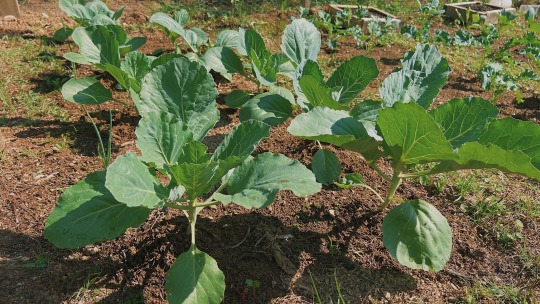

It’s been roughly a month and a half since I transplanted these cabbages in the ground. I originally planted 12 but right now there’s only 10 left due to slug damages.
They’re about a foot tall and they are starting to form small cabbages. It’s so fascinating to watch these plants that came from teeny tiny seeds slowly growing the cabbage heads that I’ve only seen in supermarkets.

Slugs loves these plants. Just a couple of days ago they knocked a whole plant down by nibbling on the stem. Above is an example of a "minor" slug damage. They usually leave a gooey-mucus-like trail. I routinely go to the garden during sunset and first thing in the morning, specially on rainy days, to keep the slug population in check.

That little thing above is a flea beetle. Another creature who loves these types of plants. And below it is, again, a "minor" flea beetle damage. I bought diatomaceous earth to combat these pests but haven't used it yet because I haven't seen any severe damage thus far. Although it's safe for humans and very effective (based on what I've heard/read), it also kills beneficial insects in the process. So if I can avoid using it, that'll be great.
9-Jul-2023
#cabbage#garden pests#slugs#flea beetle#brassica#garden#garden 2023#gardening#gardencore#produce#veg#veg garden#vegetable garden#home garden#plantblr#gardenblr#garden blog#garden journal#cottage core#simple living#slow life#rural aesthetic
42 notes
·
View notes
Text
On rain-related pests in the garden
So this year has decided to have one of the most rainy springs I've seen. It's been raining for a week and a half, and the prognosis is rain for another week. It reminds me of the first year of my gardening; we also had incessant rain for almost a month, and everyone was saying it was the absolute worst year for gardening yet. Me, who has not gardened ever before, thought it was the best year ever because I had garden produce like never before in my life (because I never gardened before), and was extremely pleased with it.
So, what does constant rain mean for gardening?
It means different things for different plants. Peas, for example, absolutely love it. Wet and cold is their ideal growing conditions, they're having a great time and growing visibly bigger every single day. Peppers are also having a great time! They love being watered and being watered constantly makes sure they'll produce some good roots. I've also noticed cabbage and kale doing very well in the rain, potatoes seem pleased, and all of the squash and the beans I've planted are coming out of the ground, and I'm guessing they're growing roots and waiting for sunshine to do better. Tomatoes, however, are not pleased at all. They're prone to getting sick if their leaves get water and then dirt on them, and since they're all small and close to the ground, they're getting dirty easily. They're also struggling to draw enough nutrients from the ground in the cold, so some are turning black, and others are a little frozen in time, just waiting until it's sunny again so they can grow.
There's a common problem in the community gardens, and people's gardens in general, where this much ran can cause a flood, meaning your plants can get their roots and stalks completely covered in water, and they do not enjoy or tolerate that. Plants that are drowning end up with their roots rotted away; it can happen to seeds as well, if they're completely underwater, they'll rot before managing to sprout.
There's another, equally big problem with this much rain – the slugs are thriving. Slugs have gotten into everyone's garden, and they're eating, well, almost everything in sight. I have had a good share of my baby bean plants eaten away, and I'm seeing big pieces of my baby cabbages missing. Beans seem to be their favourite, they're focused on annihilating them instantly, but they'll also happily eat strawberries when ripe, lettuce, cabbage, peppers, green beans, and anything that is pulled out of the ground and rotting. I actually found most of the slugs in my garden feasting on some old plants and weeds I pulled out that started rotting, there's something irresistible in it to slugs, apparently. So what can you do about slugs?
There's many tricks and methods commonly used and shared, like, put a container of beer in the ground, and they'll all drown in there. They can get picked off and eaten away by a specific variety of ducks. Some people will grow plants that are specifically alluring to slugs to distract them from their other garden produce, others will just go ahead and use diatomaceous earth or some kind of poison to get them to go away. I've never tried any of that; my true and tried method is picking the slugs off, and putting them somewhere else. It takes a lot of dedication and time, but it seems to work; if you're constantly in the garden and picking slugs away, they don't manage to reproduce, so you don't have to deal with their babies next year. With this much rain though, you'll get slugs no matter what you do, they can easily slide to your garden from any patch of grass nearby. Their eggs can also last for several years underground so eradicating them is completely impossible.
If you're trying to pick off your slugs, you need to know how to find them; slugs are not out there and eating your produce all day. They come out early morning, late evening, and after the rain stops. I will usually pick early morning or late evening to visit the garden, and pick them off once a day. It's good to remember to take some gloves so you do not have to deal with the slime (though apparently it's very healthy for the skin), and it's good to have a little container to put them in, so you can easily gather a lot before taking them away.
I found it's easier to find slugs if you're out there weeding and fertilizing, then you catch glimpses of them more easily than when you specifically go and look for slugs. We humans have the advantage of seeing the world from way higher above than slugs, and we tend to move a bit faster, so walking for 2-3 minutes and releasing slugs away from the garden, can disorient them from easily finding your garden again; it's likely they'll find something else to eat closer to their destination. I've never had slugs return in any significant number, it's more likely that you'll get new slugs who are just living closer to your garden.
From the book about 'pests' I've read recently, it's described that killing them largely does not work at all, because it's the food source for the animals that determines how fast they reproduce. So I don't think annihilation is possible, if you're creating a food source, they'll take it as a hint to reproduce at a higher rate, since resources are made available for them to do so. If you're introducing a species that is a predator, you have to count on that species reproducing massively as well, as you've put them in an environment with a large food source. Dislocating the food source, making it unavailable, or dislocating the animal that is eating your produce, so they can't find it again, could potentially hint them into slowing down reproduction, as they're not seeing any food source nearby, I think that's why this method works.
Another problem that is appearing in the garden as the result of the ongoing rain are ants. Ants by themselves are not that harmful to plants, but you know what they do? They'll farm leaf-lice on your plants. They'll find a plant and let lice put their eggs there and then guard the eggs and have bunch of lice eat all of your plants and it's terrible. So ants also need to get a little displaced and find somewhere else to build their farms other than your garden! I've not figured this one yet; I know you can mix 2 anthills in order to create an ant war and have them annihilate each other, but I don't want to make that kind of historical ant drama. I'll look into other options!
#garden pests#gardening#growing food#organic gardening#rainy season#gardening in the rain#dealing with slugs#dealing with ants#how not do go about pests#rain flooding the garden#significance of ongoing rain in the gardening season
21 notes
·
View notes
Text

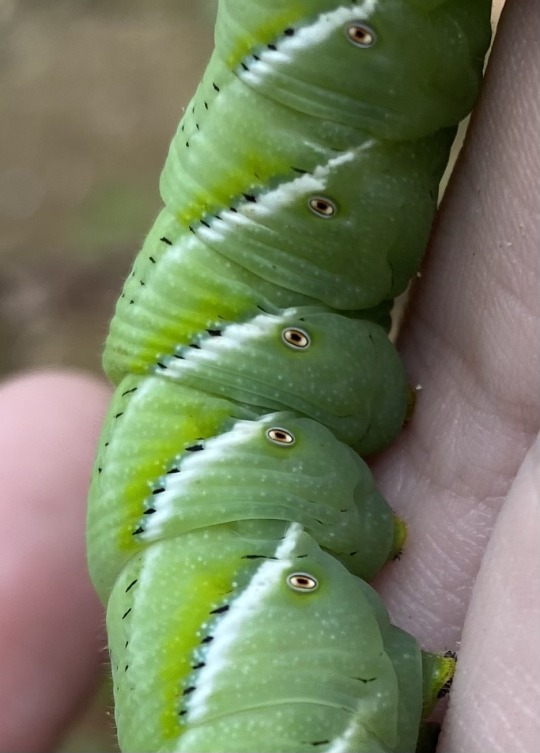


tomato (or maybe tobacco) hornworm. A pest on a volunteer tomato, but i dont have the heart to kill it when it's so friend shaped. I'll probably go back out and get it in a container to raise into a moth.
It's so soft and velvety, it's just awesome. I know gardeners are supposed to hate them but hes just a little guy, yknow?
Strangely, this is the first one i've seen in our garden in recent memory, even with the same cherry tomatoes coming back year after year from the soil bank/fruits. Thankfully the plant it's on is large and sprawling.
manduca genus (M. quinquemaculatus or m. sexta)
#animals#invertebrates#insects#nature#bugs#lepidoptera#caterpillars#tomato hornworm#gardening#garden#garden pests#August 21 2022
128 notes
·
View notes
Text
Hello hello~
I've got some garden pic updates :)
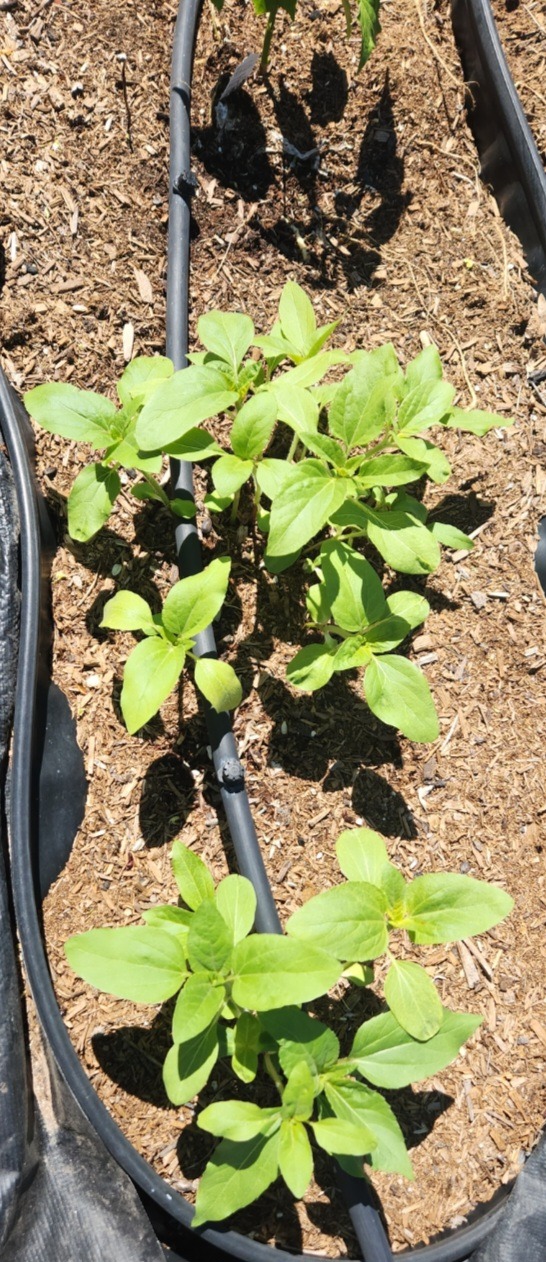
New sunflower patch, I'm only doing a small patch here as It's to tide over till I get some more scaping/zoning planned up. These are from 4th gen mix seeds (I got them from some friends and classmates)

Same row, I purchased some jalapeno starts as the peppers I seed started are still super small currently.
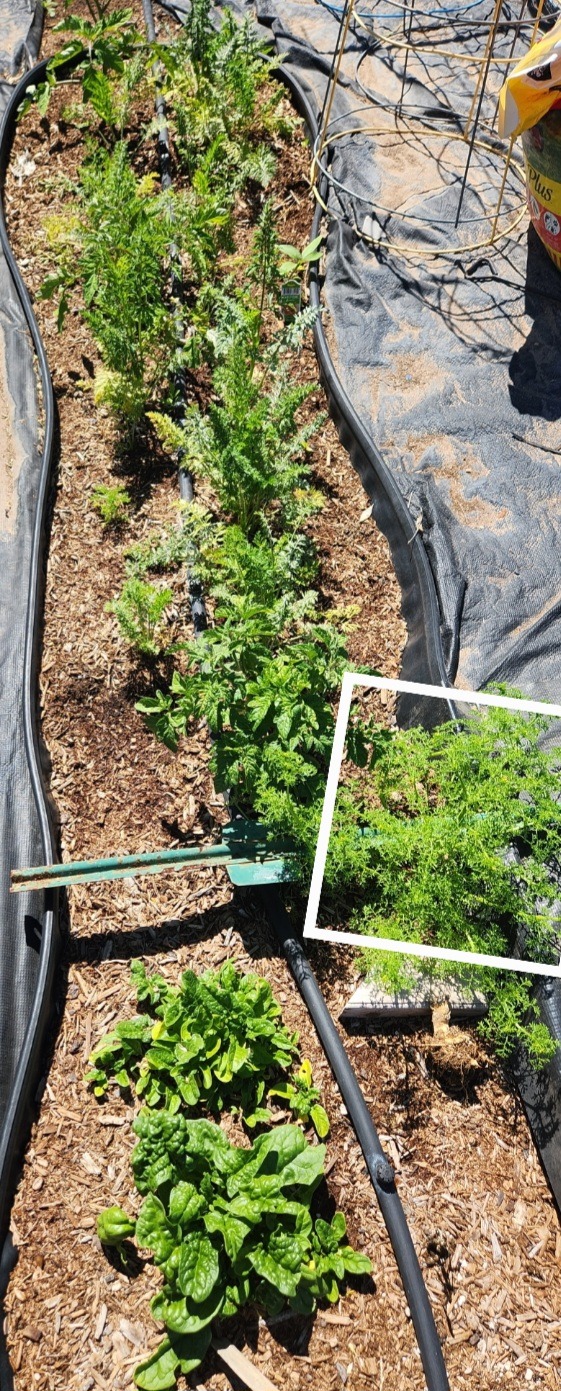
Same tows, some super late starting spinach. I'm letting it grow to see if I can see what seeding for spinach is like and share that with you all :)
In the white line/square is a wild seeded chamomile plant. I pulled it and gave it to the chickens as a treat.
Further up is the remaining carrots and some tomato starts we purchased, now interplanted with them. There's 2 slicer types and a grape variety. I don't remember offhand if they are determinate or indeterminate. Unfortunately the ones I seed started died off once they were returned outside.
:( thankfully we've all agreed to go light on tomatoes this year due to that.

In ground some direct seeded squash, these are a patty pan/Starburst variety and a couple zuchinni. With luck this year we avoid the squash bugs!
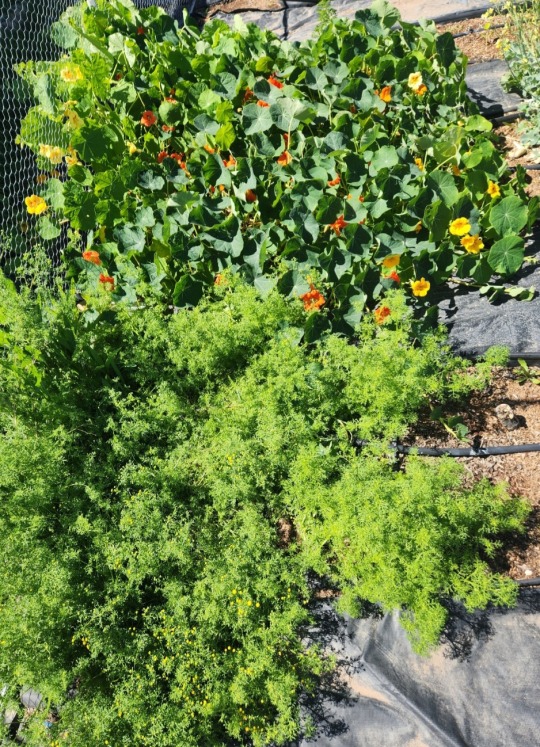
The direct seeded nasturtium in the back and front is careless wildseeded chamomile (I swear it's the best way to grow it and will be sowing another patch like this)
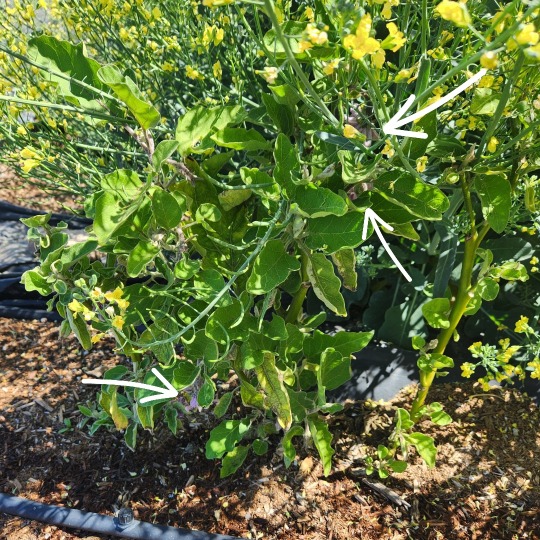
The few eggplants I've left for now have flowers, pointed to by the white arrows.
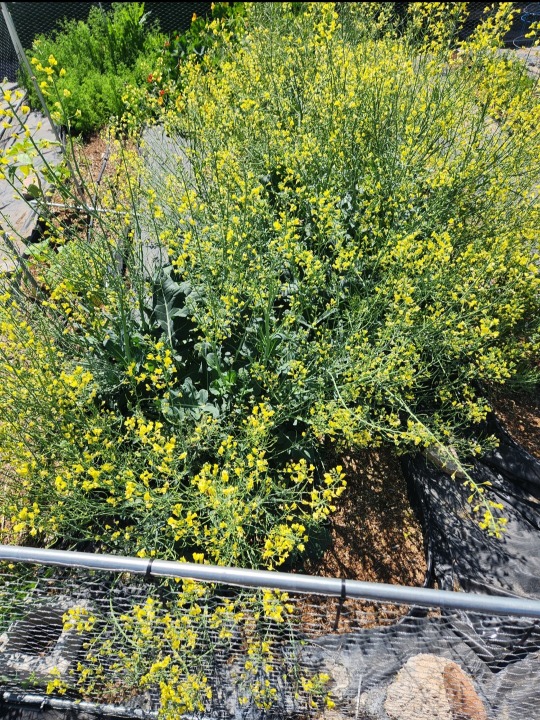
And the broccoli currently, the seeds aren't ready quite yet, but I pulled a pod the birds got to to check them, still pretty green but the seeds are of good size. Still lots of lovely flowers for the various pollinators of the area. Unlike carrot flowers, broccoli seems to attract mostly bees (the honeybees) I haven't seen too many butterflies, moths, flies or otherwise.

Just a bee enjoying some broccoli pollen~
For pest report,
So far I've seen flies and stink bugs.
No ants, aphids and thankfully no squash bugs so far.
Beneficial bug report,
I did see some ladybird gators while doing maintenence cleanup. Some small soil roachs in a few of the beds earthworms while trimming off roots to old sunflower stems.
Mixed bugs:
What I believe to be praying mantis egg cases, I don't know how old or how new they are though.
Pillbugs in some of the beds.
Our parrot visitors have stopped coming by, unfortunatly we no longer have any sunflower heads available for them. When more sunflowers come in I hope they will visit again, or perhaps even when the hollyhocks start seeding. Plenty of the smaller birds of the area still visiting though. I find the thought they might get broccoli seed and wild seed it elsewhere very funny.
This week I plan to work on getting a water line in and some more deep beds set up for growing more sweet potato vines/spuds. As well as getting some melon seeds direct seeded if I can (I may need more soil first to refill the bed).
Started some new spuds to vine for the sweet potato's and ordered some sunchoke tubers and seeds to start out some new herbs/spices and teas.
That's it for today's post and update 😊
🌱🌻Happy homesteading and Urban Farming🌻🌱
3.21.2024
#homesteading#self sufficient living#thestudentfarmer#studentfarmer#self sufficiency#food#garden#gardening#low waste#chickens#urban green spaces#urban biodiversity#urban homesteading#urban gardening#human right to clean food#right to grow food#food waste#food is a human right#herbal#garden pests#chamomile#tomato plant#broccoli grow cycle#broccoli plant#sunflowers#carrot#seed saving#plant growth#plant development#food desert
4 notes
·
View notes
Text
Last year I had a huge issue with rats eating all my tomatoes and lettuce. Turns out none of my neighbors have been doing anything to reduce the rat population, just me. Which is how I ended up catching 12 rats in two weeks, Benji caught one also. As I can't realistically remove all the rats on my own if no one else on the street is doing things to reduce or discourage them it is time to go extreme.
This year to prevent the loss of my harvest from the fuzzy rodents I am building a rat proof garden enclosure. It is basically a bunch of frames to go over the garden like a cold frame or greenhouse only with wire mesh instead of glass or acrylic panels.
Something like this is my plan. Only substituting hardware mesh instead of chicken wire for added durability.
youtube
4 notes
·
View notes
Text
11 notes
·
View notes
Text
The Top 10 Garden Pests and How to Control Them Naturally
As someone who loves gardening, there’s nothing quite as frustrating as discovering that your plants have been invaded by pests. Garden pests can wreak havoc on your plants and ruin your hard work, but before you reach for the chemical pesticides, there are natural solutions that can help you regain control of your garden. In this article, we’ll take a look at the top 10 garden pests and how to control them naturally.
Overview of Common Garden Pests
There are many different types of garden pests, but some of the most common include insects, animals, and diseases. Insects such as the tomato worm, black garden ant, red spider mites, and white grubs in soil can cause significant damage to your plants. Animals such as garden spiders, deer, and rabbits can also cause damage, while diseases like fungal and viral diseases can quickly spread and destroy your plants.
Benefits of Natural Pest Control
Using natural pest control methods has several benefits. First, it’s better for the environment because it doesn't involve the use of harmful chemicals. Second, it’s safer for you, your family, and your pets because you don't have to worry about exposure to toxic substances. Finally, natural pest control methods can be just as effective as chemical pesticides.
Garden Pests:
A. Insects
Insects are one of the most common types of garden pests. Here are four common garden insects and how to control them naturally:

Tomato Worm
Tomato worms are the larvae of the tomato hornworm moth. They are a common pest of tomato plants and can cause significant damage. To control tomato worms naturally, you can introduce the braconid wasp, which is a natural predator of the tomato worm.
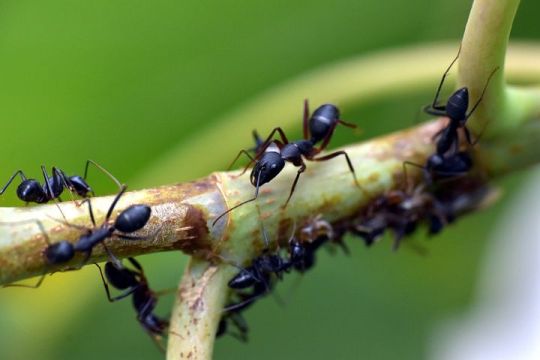
Black Garden Ant
Black garden ants can be a problem for gardeners because they can build nests in your garden and cause damage to your plants. To control black garden ants naturally, you can use a mixture of borax and sugar. The ants will be attracted to the sugar, and the borax will kill them.
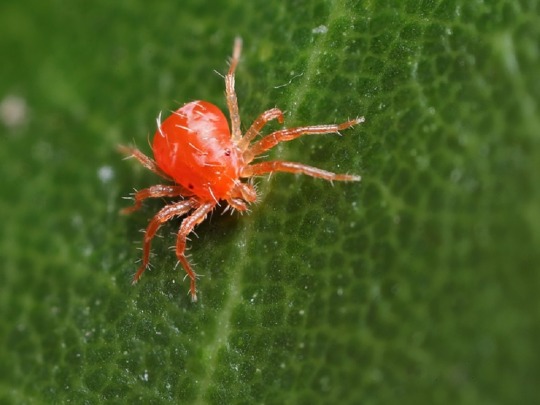
Red Spider Mites
Red spider mites are tiny pests that can be difficult to spot, but they can cause significant damage to your plants. To control red spider mites naturally, you can introduce predatory mites, which will feed on the red spider mites.

White Grubs in Soil
White grubs are the larvae of beetles, and they can cause damage to your plants by feeding on the roots. To control white grubs naturally, you can introduce nematodes, which are a type of microscopic worm that feeds on the white grubs.
B. Animals
Animals can also be a problem for gardeners. Here are two common garden animals and how to control them naturally:

Garden Spiders
Garden spiders can be beneficial for your garden because they eat other insects. However, they can also build webs that can be unsightly. To control garden spiders naturally, you can introduce predatory insects like ladybugs or praying mantises.

Deer and Rabbits
Deer and rabbits can cause significant damage to your garden by eating your plants. To control deer and rabbits naturally, you can use physical barriers like fencing or netting.
Natural Pest Control Methods:
When it comes to pest control, chemical treatments are not always the best option. They can be harmful to the environment and can also kill beneficial insects along with the pests. Natural pest control methods, on the other hand, can effectively manage pest populations without harming the environment.
A. Beneficial Insects
Beneficial insects are natural predators that can control pests in your garden. Here are some of the most commonly used beneficial insects for pest control:

Ladybugs: These beautiful insects feed on aphids, mites, and other small insects that harm plants.
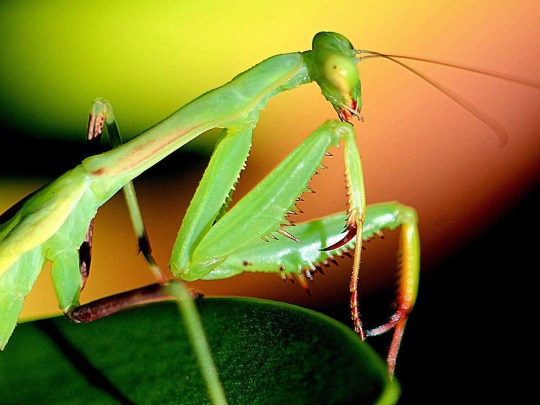
Praying mantis: These insects are great at controlling larger pests like caterpillars, grasshoppers, and crickets.
B. Companion Planting
Companion planting is another natural way to control pests. It involves planting certain crops together that can deter pests from attacking your plants. Here are some examples of companion planting:
Plant marigolds with tomatoes to deter tomato worms.
Plant onions or garlic with carrots to repel carrot flies.
C. Homemade Sprays and Solutions
There are several homemade sprays and solutions that can effectively control garden pests. Here are some of the most effective ones:
Garlic spray: Garlic contains sulfur, which repels many pests. Mix garlic cloves with water and blend until smooth. Strain the mixture and add it to a spray bottle. Spray the mixture on plants to repel pests.
Neem oil: Neem oil is derived from the neem tree and is an effective insecticide. Mix neem oil with water and spray it on plants to control pests.
Soap spray: Mix dish soap and water in a spray bottle and spray it on plants to control pests. The soap suffocates the pests, killing them.
D. Physical Barriers
Physical barriers can also be an effective way to control pests. Here are some examples of physical barriers:
Row covers: These covers are made of lightweight fabric and can be placed over plants to prevent pests from reaching them.
Netting: Netting can be used to cover fruit trees to prevent birds from eating the fruit.
Regional Considerations:
The types of pests that you may encounter in your garden can vary depending on where you live. Here are some regional considerations for garden pest control:
A. Garden pests in Florida: In Florida, common pests include whiteflies, caterpillars, and aphids. To control these pests, use beneficial insects like ladybugs and lacewings.
B. Garden pests in Southern California: In Southern California, common pests include gophers, snails, and slugs. To control these pests, use physical barriers like wire mesh to prevent them from reaching your plants.
C. Garden pests in Texas: In Texas, common pests include squash bugs, hornworms, and spider mites. To control these pests, use homemade sprays like garlic spray or neem oil.
Conclusion
Garden pests can be a real nuisance, but they don't have to be. By identifying common pests and using natural pest control methods, you can effectively manage pest populations without harming the environment. Regular monitoring and maintenance are also important for pest control. By following these tips, you can enjoy a healthy and bountiful garden.
9 notes
·
View notes
Text

Over the winter, the garden was wrecked by voles. We are slowly catching them humanely and releasing them elsewhere. We don’t want to use poison because poison can affect the food chain. I can’t imagine how I’d feel if I found one of our glorious owls dead after ingesting a poisoned vole. It’s important to try to coexist with nature as much as possible. The voles are annoying but they are just animals surviving…perspective is everything when it comes to living in the country. I will be slowly rebuilding the butterfly pool garden over the coming month. Not a single lily bulb survived and even the coneflowers got eaten. Every year brings challenges.
7 notes
·
View notes
Text
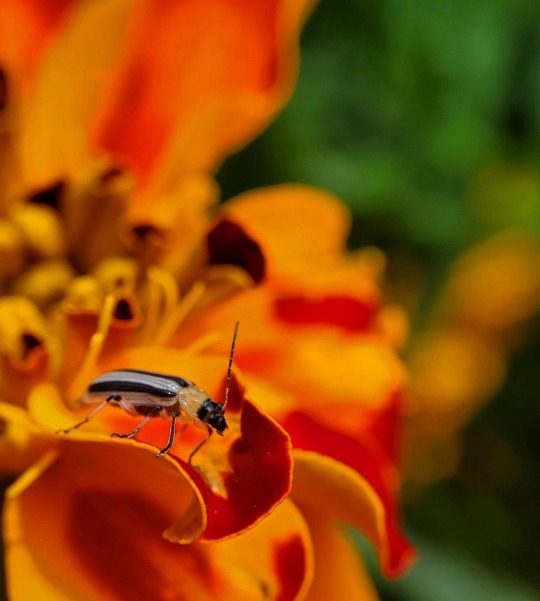
Questing for cucumbers
Acalymma vittatum, Pennsylvania
#beetle#Acalymma vittatum#striped cucumber beetle#coleoptera#nature photography#entomology#nature#bugs#biodiversity#inaturalist#insect appreciation#insects#animals#arthropods#bugblr#garden pests#cucumbers#flowers#natural beauty
17 notes
·
View notes
Text
oliver and lucero are fighting homoerotically. charlie is giving oliver a beating human heart. happy valentines day!
6 notes
·
View notes
Text

TOP GARDEN PESTS--WHAT WORKED + DIDN'T
Here is some good information from a survey that Mother Earth News did to learn more about what works, and doesn't, when it comes to limiting insect damage in organic vegetable gardens. They had 1300 gardeners from across the United States respond, so is pretty good. I've included 7 of the top garden pests and info:
1) SLUGS-- took top honors as the most bothersome pest in home gardens, with 55 percent of respondents saying the slimy critters give them trouble year after year. Handpicking was highly rated as a control measure (87 percent success rate), followed by iron phosphate baits (86 percent) and diatomaceous earth (84 percent). Opinion was divided on eggshell barriers (crushed eggshells sprinkled around plants), with a 33 percent failure rate among gardeners who had tried that slug control method. An easy home remedy that received widespread support was beer traps (80 percent success rate).
2) SQUASH BUGS-- had sabotaged summer and winter squash for 51 percent of respondents, and even ducks couldn’t solve a serious squash bug problem. Most gardeners reported using handpicking as their primary defense, along with cleaning up infested plants at season’s end to interrupt the squash bug life cycle. The value of companion planting for squash bug management was a point of disagreement for respondents, with 21 percent saying it’s the best control method and 34 percent saying it doesn’t help.
Of the gardeners who had tried it, 79 percent said spraying neem on egg clusters and juvenile squash bugs is helpful. About 74 percent of row cover users found them useful in managing squash bugs.
3) APHIDS-- were on the watch list of 50 percent of respondents, but the success rates of various control techniques were quite high. Active interventions, including pruning off the affected plant parts and applying insecticidal soap, were reported effective, but so were more passive methods, such as attracting beneficial insects by planting flowers and herbs. Several readers noted the ability of sweet alyssum and other flowers to attract hoverflies, which eat aphids. “We attract a lot of beneficials by planting carefree flowers in the vegetable garden, including calendula, borage, zinnias, cosmos and nasturtiums” (Midwest, more than 20 years of experience).
4) SQUASH VINE BORERS-- had caused problems for 47 percent of the survey respondents. The best reported control methods were crop rotation and growing resistant varieties ofCucurbita moschata, which includes butternut squash and a few varieties of pumpkin. TheC. moschata varieties are borer-resistant because they have solid stems. Interestingly, if you’re attempting to fend off squash vine borers, lanky, long-vined, open-pollinated varieties of summer squash (zucchini and yellow crookneck, for example) may fare better than hybrids, because OP varieties are more likely to develop supplemental roots where the vines touch the ground.
Many gardeners dump soil over these places, so if squash vine borers attack a plant’s main stem, the plant can keep on growing from its backup root system.
5) JAPANESE BEETLES-- Forty-six percent of respondents reported working in the unwelcome company of Japanese beetles, with handpicking being the most popular control method. Some gardeners grow trap crops of raspberries or other fruits to keep Japanese beetles away from plants. Several commonly used interventions — garlic-pepper spray, milky spore disease, pheromone traps and row covers — had high failure rates.
6) TOMATO HORNWORMS-- were of concern to 42 percent of our survey respondents. Bt and handpicking were the preferred control methods, and several folks commented that tomato hornworms are among the easiest garden pests to handpick (probably because they’re large, easy to spot and produce a telltale, pebbly trail). Many gardeners reported seeing tomato hornworms often covered with rice-like cocoons of parasitic braconid wasps. “I had a lot of tomato hornworms this year, but the wasps took them out! Just like in the photos online and in bug books!” (Mid-Atlantic, more than 20 years of experience). Gardeners named zinnias and borage as good companion plants for reducing hornworm problems.
7) CUTWORMS-- were a concern for 41 percent of respondents, and effectiveness ratings for using rigid collars (made from plastic drinking cups or cardboard tissue rolls) to protect young seedlings from damage were amazingly high (93 percent effectiveness rating). A common practice to reduce cutworm damage is to cultivate the soil’s surface once or twice before planting and hope robins and other bug-eating birds will swoop in to gather the juicy cutworms. Big, sturdy seedlings are naturally resistant to cutworms, so many gardeners said they set out seedlings a bit late to avoid cutworm damage.
#garden#gardening#homesteading#junko on the farm#pests#pest control#garden pests#organic#bugs#natural#solution
4 notes
·
View notes
Text
Does anyone know how to get rid of /repel squash bugs? Found a few squash bugs on my pumpkin plants tonight and some had already laid eggs. Got rid of the eggs and killed one but there are still at least two bugs I wasn’t able to get
#squash bugs#gardening#garden pests#pumpkin plants#planning on spraying down bugs/plants with either soapy water or coffee tomorrow morning#and laying down egg shells ?? heard that might help??#I also can’t go to the store in person rn bc COVID#I’m just trying to relax and garden while I have the plague
6 notes
·
View notes
Text
Hello and Good morning, its Time for a reply blog :)
@boondogs I absolutly will share when I find a good way to get rid of the squash Beetles. I've had issues with the beetles every year I've planted zuchinni, grey squash or yellow squash (even for a Few different pumpkin varieties) Honestly i totally spaced on trap crops for this pest issue! I've heard of them and used a few times but mostly for aphids.
If you wouldn't mind sharing, is it hubbard squash your using for your trap crop?
I looked up some other trap crops too, nasturtium, catnip, garlic, onions, radishes, marigolds, calendula, and tansy are a few mentioned. I've used marigolds on school crops before for other pests [potato beetles mainly] and they were both beneficial for removing pests and good food for pollinator species (plus they are edible, can be used for tea and in soap-making) in addition to being just pretty plants.
Last time I wanted to try neem oil, ive heard it works to smother the eggs and bugs? But wasn't able to find any when i needed it. I do have some spray neem oil now so I'll be testing that out when they show up again.
A recent one I saw, works on the eggs mostly. Take a lighter, the super mini torch type works best. Flick it on and burn the eggs. I've done this twice with other eggs that look like pest eggs. A little burn is better than a total infestation.
Another tip from a gardener friend, is to go out in the morning while it's still pretty cool, maybe even dark out with a bucket of soapy water. Flick every adult/younger life cycle into the soapy water, if possible cap and shake so they can't escape. It works, if you get all of them bit is very time consuming and physically tiring with large amounts of plant. For this method, try to cardboard placed out the night before and turn over in the morning, will help a lil bit.
Unfortunately since where im at doesn't really get freezing temperatures (very rarely frosts even) the leftover nymphs/adults that are leftover don't die. Squash bugs overwinter as adults under plant debris (this is why solarizing and keeping the garden clean is important, I'd like to leave the leftovers for soils amendment but cant.) Soil clods,rocks, log piles and buildings are all potential hibernation spots.
I've been avoiding squash plants for awhile because of this. Which sucks cause most squash-plants can provide a lot of food for fairly minimal input. As soon as I've got dirt for the new bed tho I'll likely be planting a few zuchinni.
🌱🌱Happy Homesteading all 🌱🌱
#homesteading#self sufficient living#thestudentfarmer#studentfarmer#self sufficiency#food#garden#gardening#low waste#pest control#garden pests#zuchinni#grey squash#yellow squash#pumpkin#pumpkins#chickens#trap crops#urban homesteading#urban gardening#urban farming#human right to clean food#right to grow food#right to grow#food is a human right#garden q & a
4 notes
·
View notes
Text
4 ways I keep other aminals away from mai garden wifout hurting dem! --Loki💛😺
#cats#cat#plushie#puppet#stuffed animals#puppetry#plush animal#plush toys#puppets#plush cat#how to garden#gardening#garden#rabbits#squirrel#squirrels#songbirds#birds#garden pests#cruelty free#wildlife#wholesome#natural pest control
7 notes
·
View notes
Text
8 notes
·
View notes